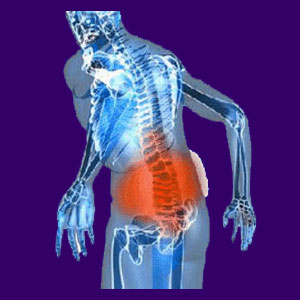
Instead of simply writing a page with the various causes of herniated discs, I thought I would comment more about not only what can create the ideal circumstances for intervertebral disc bulging to occur, but also what is often mistakenly theorized to enact disc concerns. The first piece of information which all people must understand is that herniated discs are extremely common in the spine. Most of us have them, but do not even know it, since these herniations are not painful at all and cause no health issues whatsoever.
Lets look at why herniated discs are the single most misunderstood of all spinal irregularities and how they are formed through various normal and atypical mechanisms.
Possible Causes of Herniated Discs
Of course, all the usual suspects we all fear can cause a herniation to occur in the spinal column. These factors include car accidents, sports injuries, slip and falls and any other form of trauma. Lifting can cause herniated discs in less common instances and bending and twisting are culpable in even rarer circumstances.
Let’s talk about the less obvious factors which cause herniations.
First of all, there is normal spinal degeneration. What doctors call degenerative disc disease is not a disease at all, but instead a completely universal and expected part of spinal aging. DDD does contribute to herniations. Next are the many possible idiopathic reasons why some discs herniate without injury. It happens all the time, even in healthy discs.
Factual Causes of Herniated Discs
The vast majority of spontaneous acute herniations have the potential to be painful for a time, since trauma is involved. The disc itself does not hurt, since it has no nerve tissue or blood vessels. The discomfort is usually due to general trauma to the spinal structures. These pain syndromes should resolve with or without treatment in 2 to 8 weeks on average.
Herniated discs which occur due to idiopathic reasons or normal spinal degeneration are almost never symptomatic. These are the types of herniations most of us have in our lower backs and necks, but we are generally not even aware they are there. That is, until we get hurt and receive diagnostic imaging to explain our pain. Then the disc pathologies are located and most often blamed on occurring due to the most recent injurious event, even when they have actually been there all along.
This is a profile I saw countless times while working as an insurance investigator. It is also a prevalent problem that is obvious in many letters you send us on The Cure Back Pain Network. A majority of your MRI reports make no mention that the herniations found have been there for a long time, as structural evidence makes it clear that these “injuries” are not recent occurrences.
Evaluating Herniated Discs Causes
Although found after an actual or perceived back injury on MRI, many herniations have already been in existence before the trauma took place. The degenerative changes in the disc and vertebrae will help establish the age of a herniation, but these criteria are often overlooked in litigation.
It is amazing to me how doctors will be brought in to explain how the disc has been damaged and the possible consequences, but they will rarely mention the endplate changes and other factors which show the herniation to have been there for over a decade already. Lucky for these doctors, most jury members will never question them.
The point is simple. Sure, you may have hurt your back. It happens. You may have a herniated disc. You probably have a few, in fact. There is often little correlation between perceived injury and disc herniation. These disc issues may have been there a very long time and caused no harm at all, but once discovered and brought into the spotlight, the nocebo effect will surely increase the chances for a symptomatic expression. This is dangerous turf to tread upon. Many inconsequential injuries are simply perceived and act as triggers for back pain to begin rather than being the source of actual anatomical damage.





